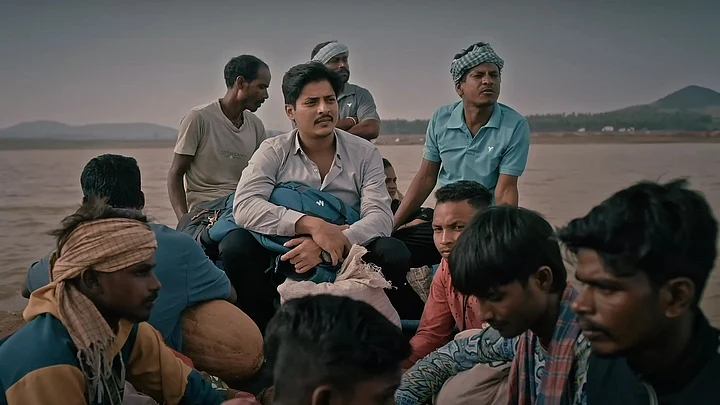DAMaN opens with Dr Siddharth Mohanty (Babushaan Mohanty) finding out that he has been posted in Malkangiri, a remote district in Odisha and soon learns that the place is infested with mosquitoes which has led to widespread Malaria.
While he is initially reluctant to accept the posting and spends his early days there trying to quit and leave, he soon teams up with people around him to come up with a program called DAMaN (Durgama Anchalare Malaria Nirakarana).
To add to this, the villagers are suspicious of Mohanty and his team, especially because of the rampant presence of godmen who claim to possess the cure to all illnesses.
Mohanty then decides to make the journey to the village frequently, accompanied by his assistant (Dipanwit) and ASHA workers, to educate the residents, despite a Naxal presence.
Hailing from Bhubaneshwar, his journey throughout the film, thematically, is perhaps reminiscent of Abhishek Tripathi in Panchayat, and is equally if not more, endearing.
The film, based on a real story, is the stuff of documentaries and yet, it finds its perfect medium in this feature film, written and directed by Vishal Mourya and Debi Prasad Lenka. As the lead, Babushaan Mohanty’s frustration and eventual drive are palpable on screen.
As he struggles to save lives despite having minimal medical infrastructure at his disposal, the audience can’t help but feel the same way.
While the first half might suffer in pacing, the rest of the film is engaging. DOP Pratap Rout captures the serenity of Odisha all while keeping his gaze firmly fixed on the film’s emotional stakes. Arguably, DAMaN does have a flaw that several autobiographical or biographical ventures have - that of being a hagiography (ever so slightly).
While Dr Mohanty’s success story is nothing short of heroic, the efforts of the people around him and especially the ASHA workers deserved a brighter spotlight.
While it’s heartening to see the film get a release in Hindi, the dubbed version takes away some of the magic of the Odia original, especially since the diverse dialects, from Bhubaneshwar to Malkangiri, add to its spirit immensely.
As someone who hails from Odisha and has spent a considerable number of years watching Odia films, a film like DAMaN couldn’t have come at a better time. There are so many stories left to tell from the region but Odia cinema had started to suffer the same fate as most cinema - getting stuck in a formulaic rut.
(At The Quint, we question everything. Play an active role in shaping our journalism by becoming a member today.)
